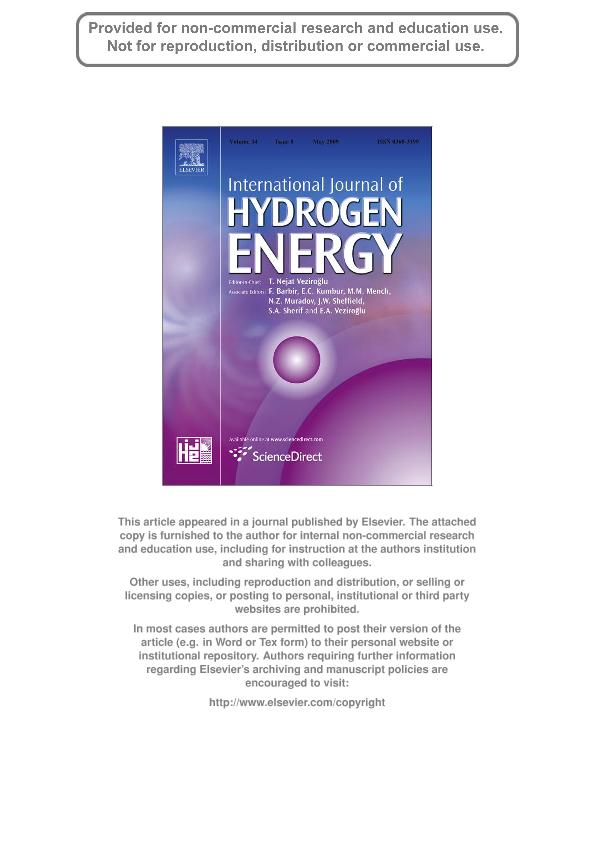Artículo
Simulation of hydrogen trapping at defects in Pd
Fecha de publicación:
16/05/2009
Editorial:
Pergamon-Elsevier Science Ltd
Revista:
International Journal of Hydrogen Energy
ISSN:
0360-3199
Idioma:
Inglés
Tipo de recurso:
Artículo publicado
Clasificación temática:
Resumen
The interaction of hydrogen with defects in palladium was studied using qualitative electronic structure calculations in the framework of the Atom Superposition and Electron Delocalization Molecular Orbital (ASED-MO) theory. Interatomic distances, energies and electronic structure for hydrogen at a dislocation and at a vacancy were determined and compared with that for an octahedral site in the Pd fcc lattice. We found that a repulsive H-H interaction is developed if these atoms occupy interstitial sites in a regular lattice. However, when the H atoms are close to a dislocation, the accumulation becomes possible. It was found that the dislocation allows hydrogen association at interatomic distances close to molecular hydrogen. The Density of States (DOS) and Crystal Orbital Overlap Population (COOP) curves were used to shed more light on the interstitial-Pd-defect interactions. Hydrogen produce changes in the local and global electronic structure of the host metal and induce changes in the cohesive forces between atoms in the host matrix. In all cases, it was found that strong bonds between Pd and H atoms are formed while metal-metal bonds are weakened. The metal-hydrogen bonds were characterized by charge transfer from metal atoms to hydrogen.
Palabras clave:
Dislocation
,
Hydrogen
,
Palladium
Archivos asociados
Licencia
Identificadores
Colecciones
Articulos(IFISUR)
Articulos de INSTITUTO DE FISICA DEL SUR
Articulos de INSTITUTO DE FISICA DEL SUR
Citación
Gesari, Susana Beatriz; Pronsato, Maria Estela; Juan, Alfredo; Simulation of hydrogen trapping at defects in Pd; Pergamon-Elsevier Science Ltd; International Journal of Hydrogen Energy; 34; 8; 16-5-2009; 3511-3518
Compartir
Altmétricas




